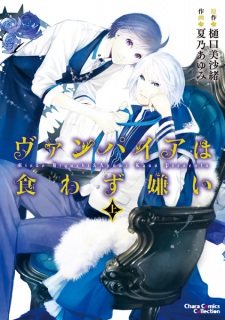
The Good Girl's Guide to Being Bad
by Cookie O'Gorman
Seventeen-year-old Sadie is tired of being a good girl.
Her Career Aptitude Test results say she’s ideally suited for a career in the clergy (aka a nun), and on top of that, she receives yet another rejection. An aspiring dancer/choreographer, Sadie dreams of being featured on Dancer’s Edge—but they say she’s too sweet, needs more life experience. Her BFF, Kyle, and her oldest friend, 79-year-old Betty, agree: Sadie is in desperate need of a life makeover.
But she’ll need a coach.
Sadie doesn’t lie, cheat or steal–heck she doesn’t even curse (part of the reason she hasn’t checked off anything on her “Carpe Diem List”). Sadie doesn’t know the first thing about being bad. But Kyle’s twin brother, Colton, does. And he’s willing to teach Sadie on one condition: she has to do everything he says for the next month.
A dazzling first kiss, two smokin’ hot brothers and a bet that changes everything. In this enemies-to-more YA romance, Sadie learns:
Breaking the rules can be fun—especially when it leads to happily-ever-after.
.
Read
The Good Girl's Guide to Being Bad on http://kissnovel.net
Martial Peak Reviews
Cookie O'Gorman's The Good Girl's Guide to Being Bad is a delightful exploration of self-discovery, teenage rebellion, and the complexities of young love. The novel centers around Sadie, a seventeen-year-old who is tired of her "good girl" persona and yearns for a taste of adventure and excitement. The book's premise is both engaging and relatable, especially for young adults who are navigating the often tumultuous journey of adolescence.
From the outset, Sadie's character is crafted with a sense of authenticity that makes her both endearing and relatable. Her frustration with being pigeonholed into a life of predictability is palpable, and her desire to break free from societal expectations is a theme that resonates with many young readers. Sadie's journey is not just about rebelling against the "good girl" stereotype but also about finding her true self amidst the chaos of teenage life.
The plot is set into motion when Sadie's Career Aptitude Test suggests she is best suited for a career in the clergy, a revelation that underscores her frustration with her current life. Her aspirations to become a dancer and choreographer are met with rejection, further fueling her desire for change. This is where the novel introduces its central conflict: Sadie's need for a life makeover.
Enter Colton, the quintessential "bad boy" and twin brother of Sadie's best friend, Kyle. Colton's character is the perfect foil to Sadie's innocence. His willingness to coach Sadie in the art of being "bad" sets the stage for a series of humorous and heartwarming adventures. The dynamic between Sadie and Colton is electric, filled with witty banter and undeniable chemistry. Their relationship evolves from a reluctant partnership to something deeper, capturing the essence of the enemies-to-lovers trope with finesse.
O'Gorman's writing shines in her ability to balance humor with heartfelt moments. The novel is peppered with laugh-out-loud scenes, particularly as Sadie attempts to check off items on her "Carpe Diem List." These moments of levity are juxtaposed with more serious themes, such as the pressure to conform and the fear of failure. The author deftly navigates these themes, creating a narrative that is both entertaining and thought-provoking.
One of the standout aspects of the book is its exploration of friendship. Sadie's relationships with Kyle and her elderly friend Betty add depth to the story, providing a support system that is both quirky and heartwarming. Betty, in particular, is a delightful character whose wisdom and humor offer a refreshing perspective on Sadie's journey. The intergenerational friendship between Sadie and Betty is a testament to the novel's ability to transcend typical YA boundaries, offering readers a unique take on the importance of diverse relationships.
In terms of character development, Sadie's transformation is both believable and inspiring. Her journey from a rule-following good girl to someone who embraces her individuality is portrayed with nuance and care. Colton's character, too, undergoes significant growth, revealing layers of vulnerability beneath his tough exterior. Their evolving relationship is a testament to the power of love and friendship in overcoming personal insecurities and societal expectations.
Comparatively, The Good Girl's Guide to Being Bad shares thematic similarities with other YA novels such as Sarah Dessen's Along for the Ride and Kasie West's P.S. I Like You. Like Dessen and West, O'Gorman excels in creating relatable characters and engaging narratives that capture the essence of teenage life. However, O'Gorman's unique blend of humor and heart sets her work apart, offering readers a fresh take on familiar themes.
Overall, The Good Girl's Guide to Being Bad is a charming and insightful read that will resonate with anyone who has ever felt the pressure to conform. O'Gorman's skillful storytelling and well-developed characters make this novel a standout in the YA genre. The book's exploration of self-discovery, friendship, and love is both entertaining and meaningful, leaving readers with a sense of hope and empowerment.
For those seeking a lighthearted yet impactful read, The Good Girl's Guide to Being Bad is a must-read. Its blend of humor, romance, and life lessons makes it a perfect choice for young adults and anyone who enjoys a good coming-of-age story. As Sadie learns to embrace her true self, readers are reminded of the importance of authenticity and the joy of breaking the rules every once in a while.
























Reviews 0
Post a Reviews: